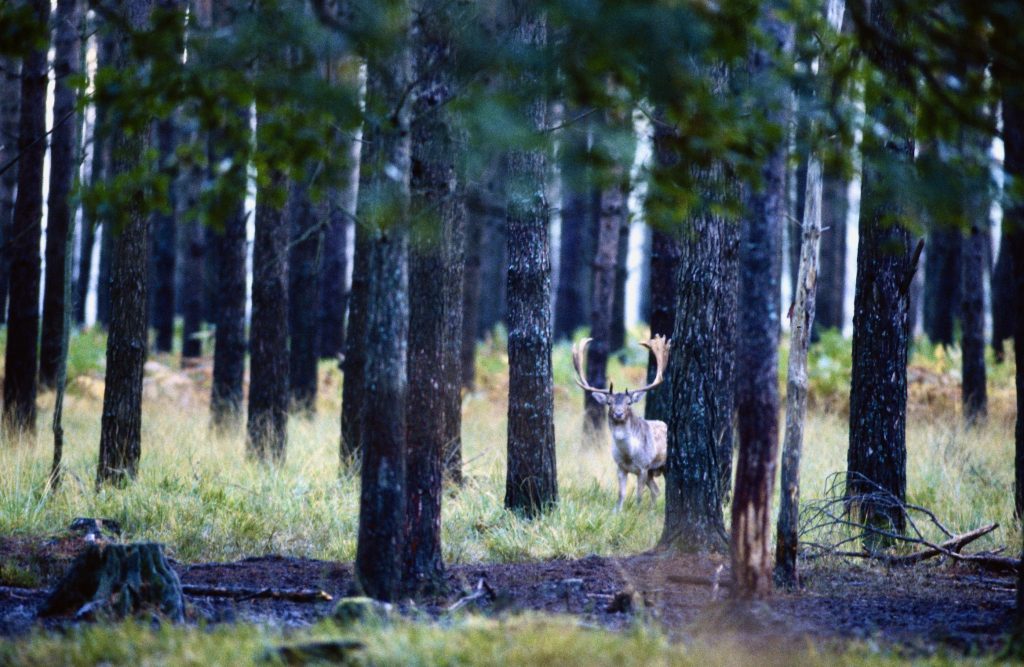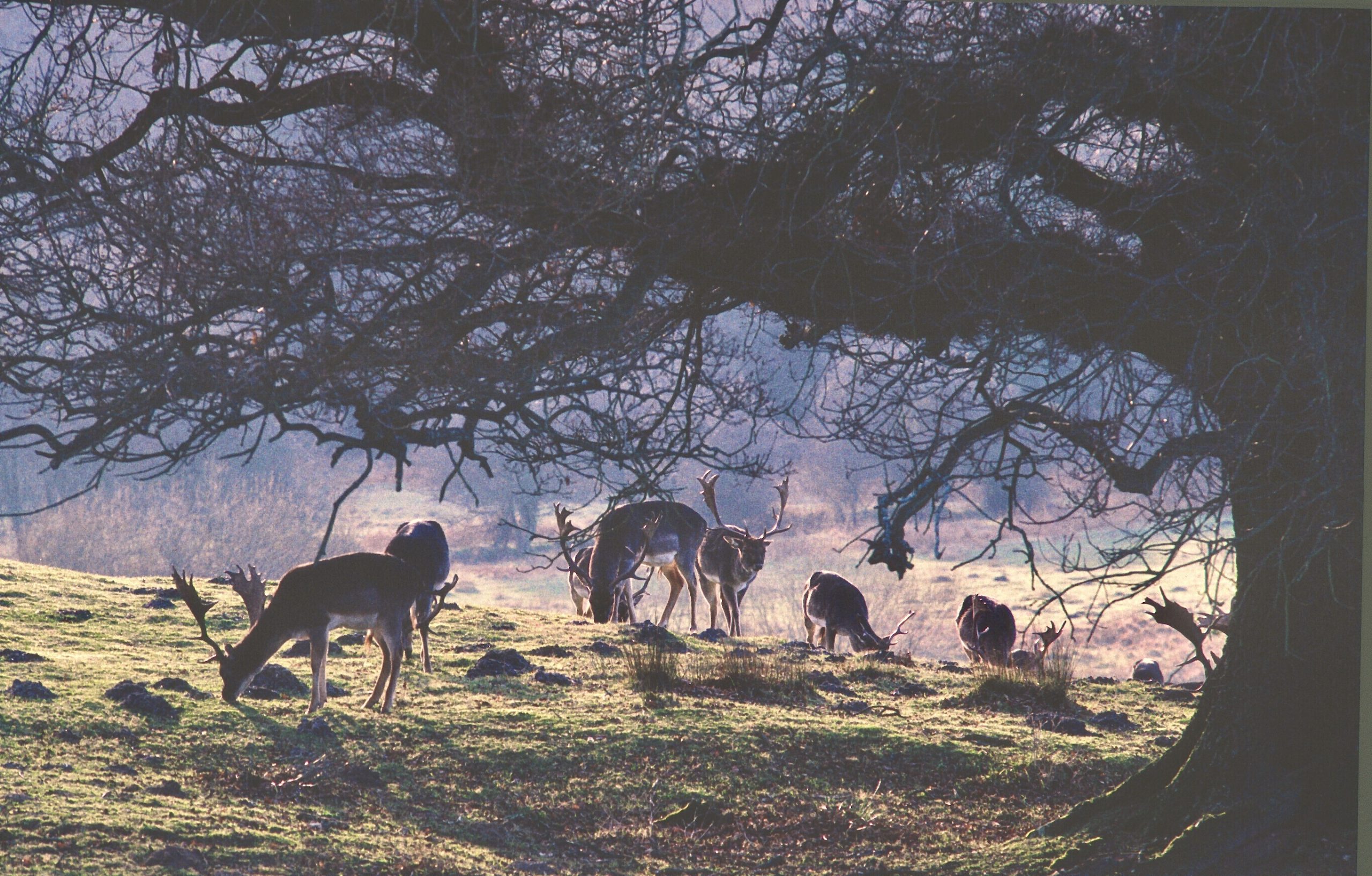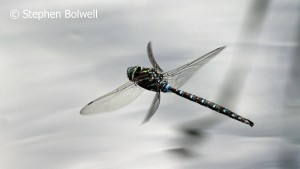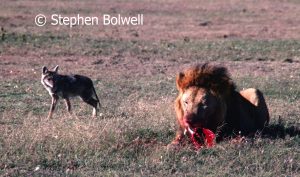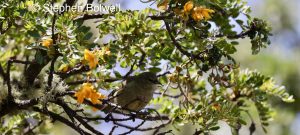October in the New Forest in Southern England is the time of the fallow deer rut and I thought this might be a good time to consider an unusual event that I witnessed exactly 20 years ago today in the early hours of the 19th October 2000.
It was shaping up to be an almost perfect New Forest morning; dawn was approaching, birds were singing and there wasn’t a breath of wind to disturb the air. Ideal conditions for sound recording I though, but still I picked up my camera bag from the back of the vehicle, doing my best to ignore the tape recorder: sound is frequently of secondary importance to cameramen — maybe it’s brain defect. I looked through the trees towards the horizon and instinctively knew the sun was coming up, but not in a meaningful way — a black bruise of cloud was moodily attempting to eliminate daytime altogether, and it seemed unlikely this was going to be the perfect day I was hoping for. For some time there wouldn’t be enough light to film anything, especially under the trees. Reluctantly I switched to the sound kit, but grabbed a stills camera as a comforter — stuffing it into my jacket.
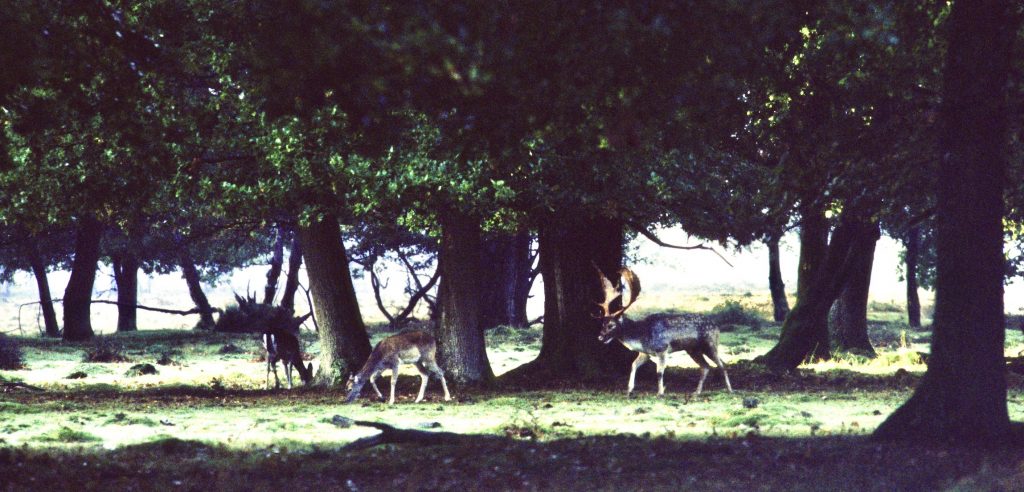
Form many years I had been filming the fallow deer rut on the Forest, rising early through October in an attempt to get footage of the competing males followed by successful individuals mating with attendant does (mature females) these gathered close by the stand while the bucks battle for supremacy. When the bucks are evenly matched the event is quite a spectacle; and the sound of clashing antlers resonating across the forest as the sun comes up is spine tingling experience; and on this particular ‘lights out’ morning sound recording seemed my best option. It would also be a break from filming the activity which in the New Forest can be quite challenging.
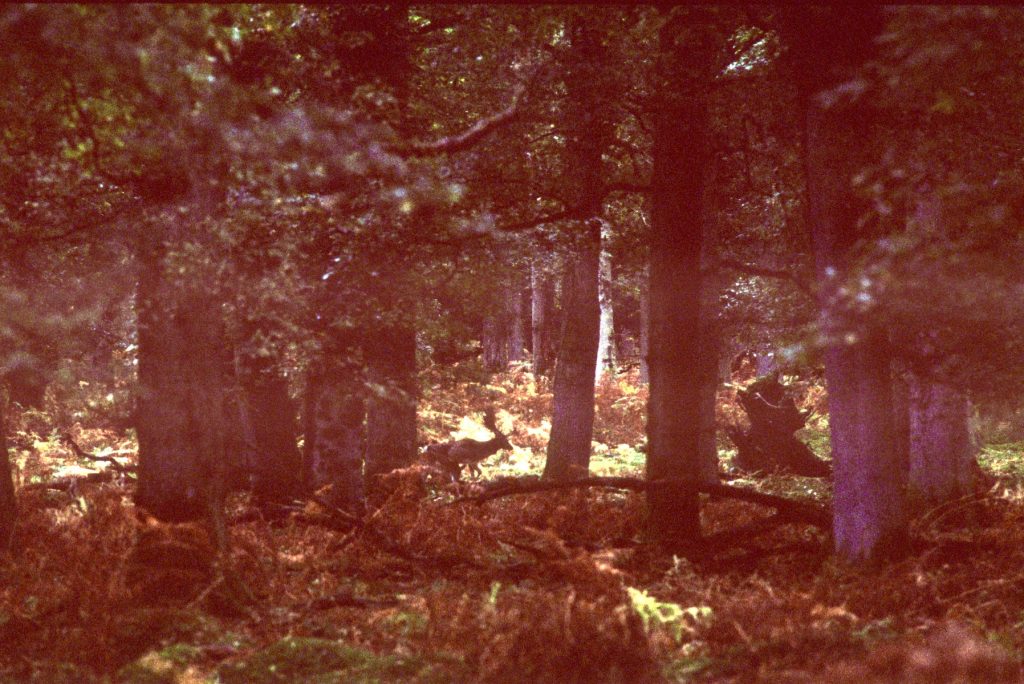
Had I been working on this day with the benefit of a modern digital camera I would have certainly managed an exposure even in poor light, but back then film speeds were unforgiving; and to be honest the bracken was so tall on the site I was working, I could hardly see the fallow bucks when their heads were down and locked in battle.
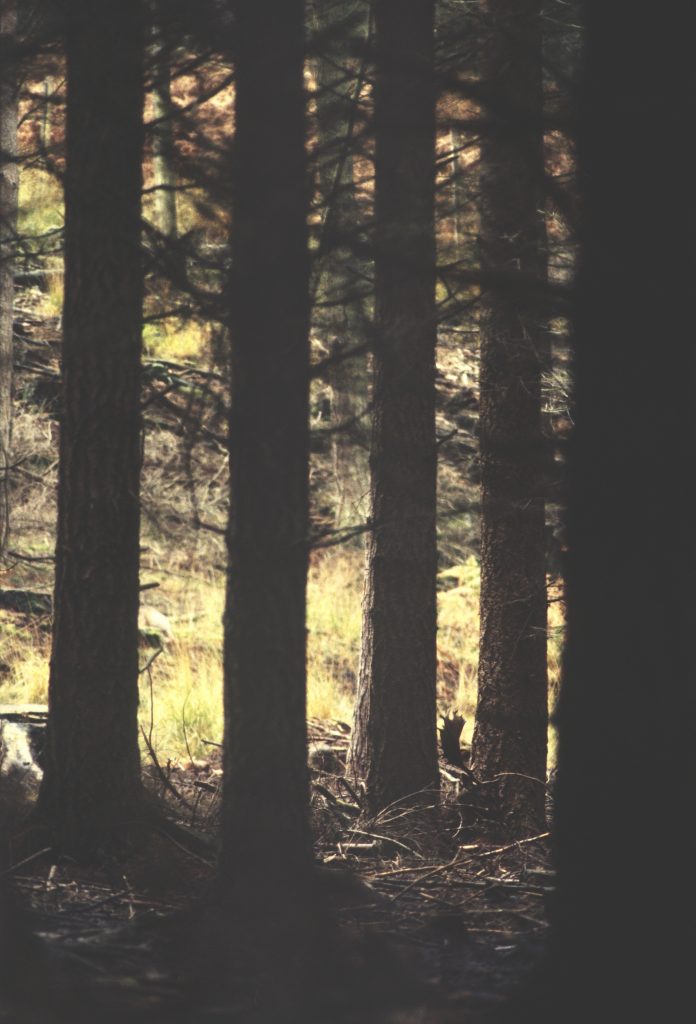
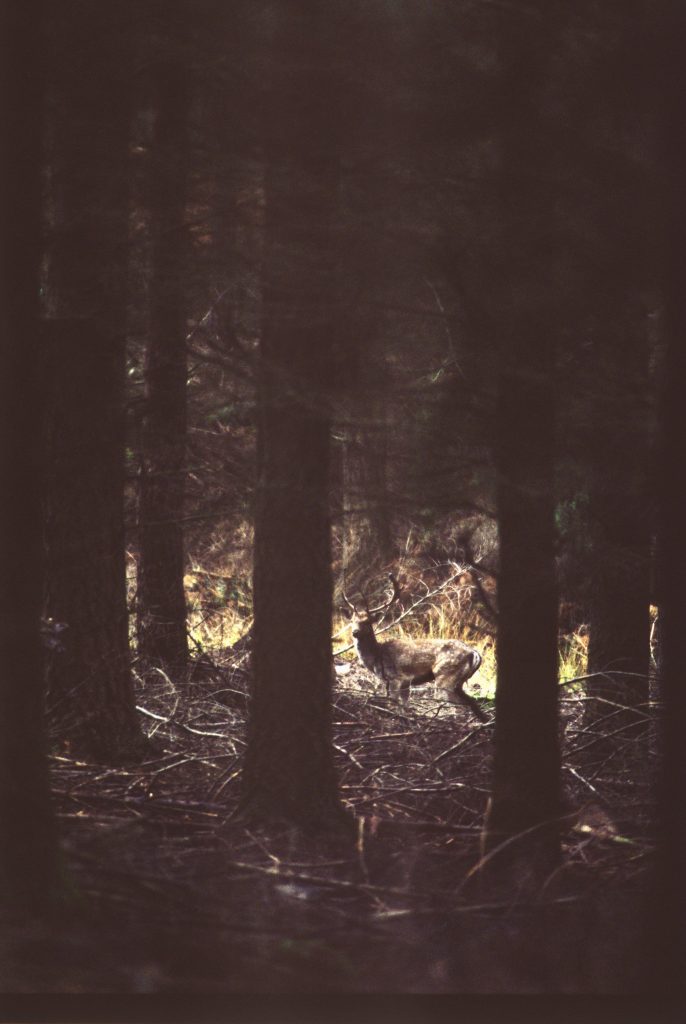
Usually the biggest, strongest buck on a stand will win the opportunity to father offspring, and the most impressive bucks will usually hold the largest entourage of does as they come into season. When we use the term survival of the fittest, this kind of scenario is what we imagine, but natural selection has many faces, and it is difficult not to think of this fight for male dominance in terms of a brutal victory or defeat.
However, closer observation reveals that this really isn’t about damaging the competition, it is about demonstrating greater fitness, which encourage less well equipped bucks to stand down and live to fight another day when they might perhaps become better equipped to challenge as the dominant male. Usually a buck that is losing ground to an opponent will break away and leave the field of play. This is all very interesting to watch, but on rare occasions things can go wrong, with one buck inadvertently causing the death of another, but such events are very unusual and I’ve witnessed it only once.
Open oak woodland is easier to film in than under the pines.
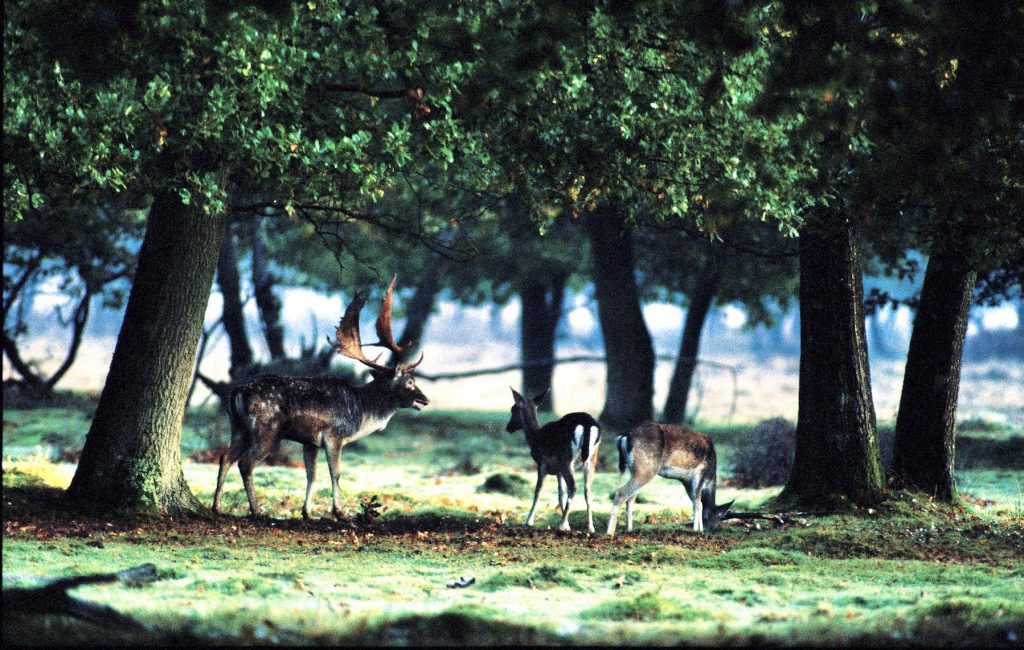
Wildlife disturbance was a serious problem across the Forest even 20 years ago, especially for deer. I was once sat quietly by a stand when two dogs came rushing through, scattering the fallow in every direction. Two minutes later and older lady came down the ride on a fine horse. I walked out onto the ride and asked if she once had owned two dogs; she admitted that the dogs were hers and I pointed out where they had run through the deer and seriously disturbed them. “What deer?” she said. “There are no deer here”… And you bloody photographers are an absolute nuisance.” I found it hard to disagree and with her final comment Lady Marjorie Brain-Dead kicked her horse hard in the flanks and sped away into the distance.
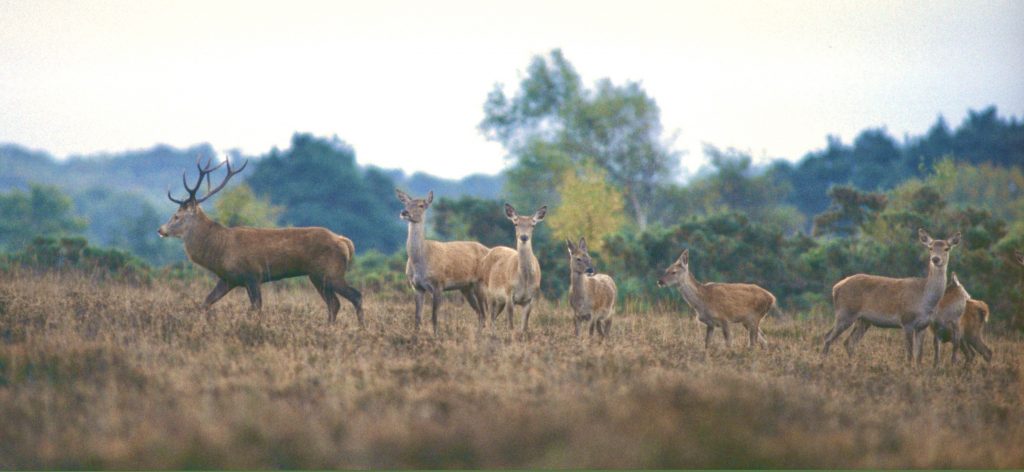
On the day of the unusual event, to my great good fortune, there were no early morning dog walkers, and as I settled into the bracken, a buck immediately started to roar — although the noise is are more a series of deep resonant belches than a roar and can be quite unnerving if you’ve never heard it before. Then, a sudden sharp clatter of antlers to my left revealed a large pair of bucks, with their heads down and legs braced like two opposing teams in a rugby scrum, engaged is a serious game of push and shove; churning up the mud they were evenly matched and appeared to be getting nowhere. Occasionally they would break off to take stock of one another; then, dropping their heads again, they’d smash their antlers together with explosive force. Even in poor light I could see taut muscles straining across their shoulders and hind-quarters as they put every ounce of their strength into the battle. Then, suddenly, another couple of bucks started up behind me.
I had never witnessed two pairs of bucks battling in close proximity before, but today it happened — obvious because for once, I’d gone out into the natural world without my cine camera — but never mind — I had been in place for half an hour and there was still no light to speak of. A third equally impressive contest then started up way over under the pines in woodland 100 yards to my right; and t first I wasn’t much interested because this was a stand that I’d looked at before, and the bucks there had been young and very half-hearted about things. In any case my preference was to watching fallow beneath stands of oak trees where the forest had opened out a little and there was more light. This couple were in any case deep in the bracken and didn’t gain my full attention for about twenty minutes, until they eventually arrived where I was, and almost ran over me. I had realised there was something odd about them from the start, and I began to make sense of it: not once had they raised their heads to assess one another, and it was clear their antlers were locked: instead of attempting to gain advantage they were simply trying to break free, bouncing and whirling like energised toys equipped with those special batteries that never run down.
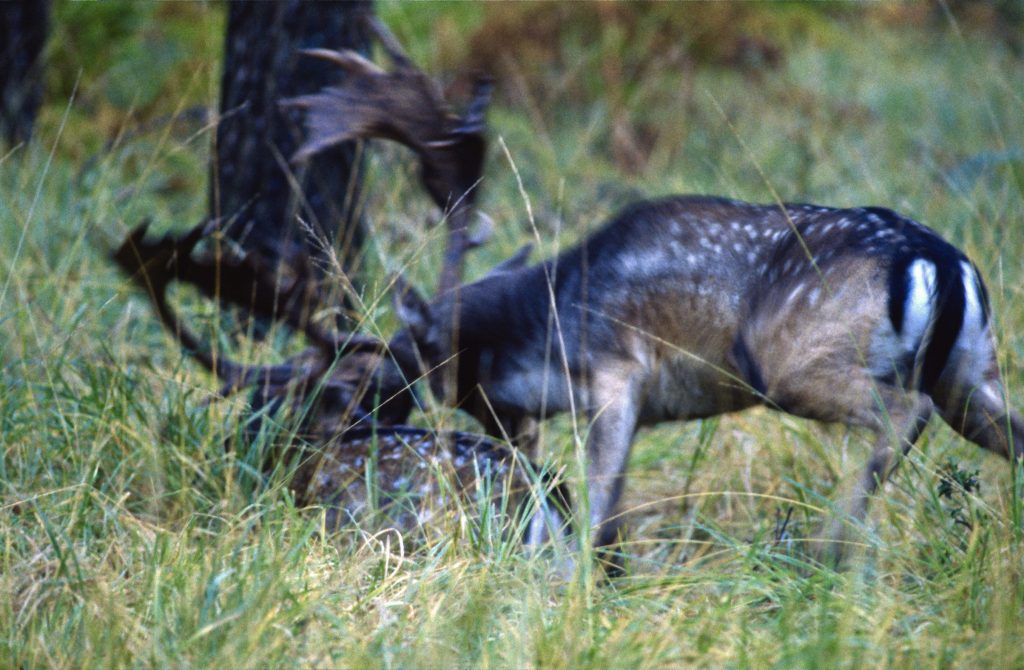
The the poor animal that went down as if by misfortune he’d been given the cheaper batteries that always let you down in a crisis. Neither buck had been aware of me, and so I moved closer, just in time to see the stricken buck rise up and slam against a tree; but this was now a puppet show, the fallen individual had no life of his own and was moving entirely under the control of his opponents strength, the dead dragged along by the living buck’s immense power. Then the standing buck saw me… more to the point he saw how close I was. I thought my presence might change the dynamic enough to startle the living animal into breaking free — bat stayed a fallow deer body length from the action (for obvious reasons). With a Herculean effort the big buck pulled his head up and to one side and then down, pivoting on his front legs he brought his whole body in an arc across his dead adversary and with that the antlers detached and the stricken body lay like a sack of dead meat on the ground, which is exactly what it had become. Despite the still poor light, I snapped a moody picture of the pair just as this occurred. The less artistic amongst us would describe the image as blurred… But I’d would call it atmospheric. The detached buck once free disappeared into the forest in an instant and I was left at the side of the ride with a corpse at my feet.
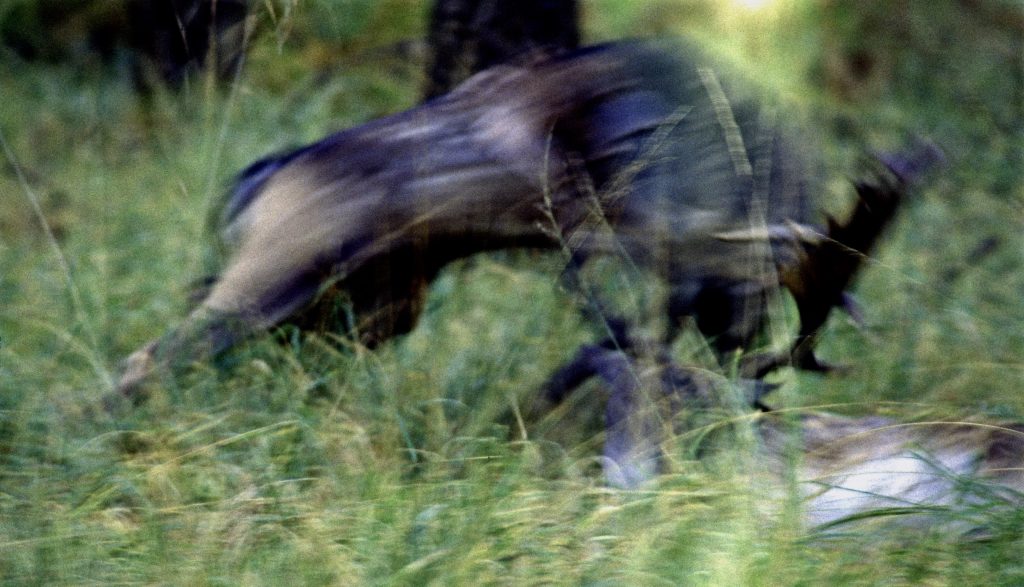
I suspected the dead buck had a broken neck, but I wasn’t sure; and I’ll admit my first thought wasn’t, ‘Does this meat belong to the queen’, but rather: “How can I get this animal into the back of my estate” parked as it was 50 metres back along the drive Then I suddenly remembered Woody Allen’s comic piece about shooting a moose in the woods after which he tied the body to his fender and drives home. The moose of course wakes up. Imagine then what might happen if a full sized fallow buck woke up inside rather than outside of your vehicle — probably not quite so funny when you’re driving along the M27. But it was never going to happen: I could just about lift the bucks head by his antlers – without a winch there was no chance that I could get the dead animal into my estate… So, there was a sudden change of plan.
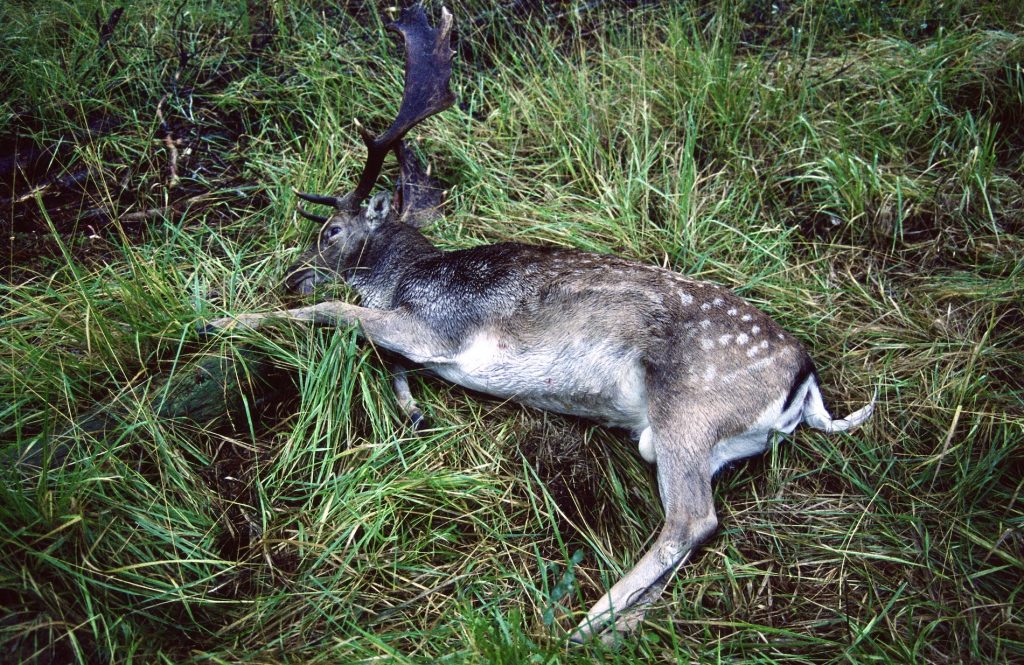
So, I went off to visit the keeper who’s beat this was. He knew I was filming nearby, and this was his day off, but he was still pleased to see me… Until I told him my story and said that I really needed him to come and winch the dead buck into his vehicle. We could then take it back to his place, do an autopsy and try and work out exactly what had caused the buck to conk out under the stress he had suffered: fallow bucks don’t eat much, if they eat anything at all during the rut and their physical condition quite naturally deteriorates over a two or three week period, but seldom do they die. It was a long shot to find out and my friend was less than excited about the prospect of cutting up a dead animal on his day off, but he agreed and we took the buck back to one of his outbuildings to take a look at his insides.
The first thing we noticed was an external mark low on the buck’s thorax — this area was badly bruised, but the skin wasn’t pierced; most likely this injury was the result of a sharp prod from the point of an opponents antler. As a zoology student I had become interested in dissecting any dead animal that I happened to find, but through most of my adult life I’ve resisted the temptation to pick up every thing I come across that isn’t road kill, just to find out why it died — The ‘why’ of things has always interested me. This would be the largest animal I had worked on… And as I haven’t since stumbled across a recently deceased elephant… it still is — but there’s always time.
We cut into the thorax very carefully, avoiding nerves and blood vessels and discovered the lungs to be intact and undamaged; but there was a bloody mark on the inside wall of the chest that lined up with the external mark that we had already noted and both marks lined up fairly well with what appeared to be minor damage to the lower tip of the heart.
It is impossible to say for certain, but it seemed likely that the blow the buck had suffered, might have been survivable, had he not locked into a prolonged tussle with another male. The match had gone on too long and most likely the unfortunate creatures heart had given out, and in that sense it might be considered to be a rare battle to the death.
Somewhere in the woods, the champion of this match might have been mating with does that this buck had paid the ultimate price for. There is perhaps a romantic notion that if he had not received a fatal injury, then he might have been the one carrying on his genetic line, but the temptation to say that he had died of a broken heart, even for the anthropomorphically minded, might prove to be a literal step too far.
